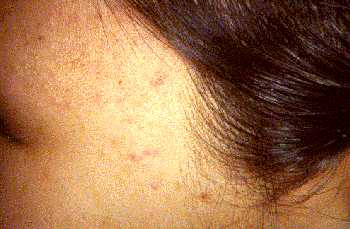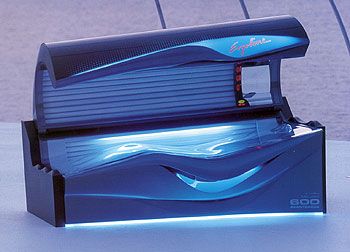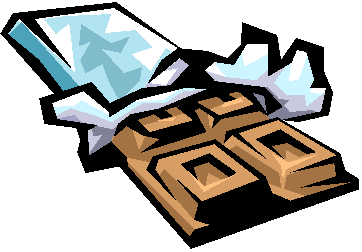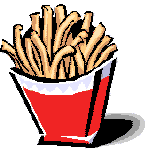ACNE MYTHS AND FACTS
 |
 |
ACNE MYTHS AND FACTS
 |
 |
According to the American Academy of Dermatology (AAD), almost 100% of kids and teens between the ages of 12 and 17 get whiteheads, blackheads, or pimples at one time or another. And 17 million people in the United States - including adults, teens, and preteens - have acne, which is considered a common part of puberty.
But dispelling the many myths about acne is half the battle in the quest for clear skin. Help your child separate acne fact from acne fiction.
Myth: Getting a tan helps to clear up skin.
Fact: Even though a tan may temporarily cover the redness of acne, there's no evidence that having tanned skin helps to clear up acne. People who tan in the sun or in tanning booths or beds run the risk of developing dry, irritated, or even burned skin. They're also at increased risk of premature aging and developing skin cancer.

Encourage your child to keep skin safe by wearing protective clothing, hats, and sunglasses when outdoors. Your child should also wear a sunscreen with a sun protection factor (or SPF) of at least 15 that's labeled "noncomedogenic" or "nonacnegenic," which means the product won't clog pores. Discourage the use of tanning beds or booths, even for special occasions such as proms or vacations. Ask your child's doctor whether a sunless tanning product would be a better alternative.
 |
 |
If your child is using prescription acne medications (including oral contraceptives, which are often prescribed to help clear up acne), it's especially important to stay out of the sun and away from tanning beds. These drugs can make skin extremely sensitive to sunlight and the rays from ultraviolet tanning booths.
Myth: Eating greasy, fried foods or chocolate can cause acne.
 |
 |
Fact: Numerous scientific studies have come to the same conclusion: There's no connection between diet and acne. Although you may be tempted to use this myth to encourage your child to eat more fruits and vegetables, blaming zits on pizza, soda, french fries, and candy bars just isn't accurate.
Myth: The more you wash your face, the fewer breakouts you'll have.
Fact: Hygiene isn't related to the development of acne, either. Washing the face each day gets rid of dead skin cells, excess oil, and surface dirt, but too much cleansing or washing too vigorously can lead to dryness and irritation - which can actually make acne worse.

Dermatologists usually recommend gently washing - not scrubbing or rubbing - the face no more than twice a day with a mild cleanser and patting the skin dry. Your child should steer clear of harsh exfoliants or scrubs, which can actually irritate blemishes. In addition, toners containing high concentrations of alcohol can dry out the skin and should be avoided.
Myth: Popping pimples will help them go away faster.
Fact: Though popping a pimple may make it seem less noticeable temporarily, popping can cause the zit to stay around longer. Popping a pimple pushes bacteria from the zit further into the skin, making the area around the acne even more reddened and inflamed. Pimple-popping devices - such as "blackhead extractors" advertised in magazines - aren't any safer. Sometimes, popping a pimple will cause a brown or red scar to form that could last months; and scars, in the form of dents and pits, can last forever.
If your child is bummed because a huge zit arrived just in time for a special event, a cortisone injection given by a dermatologist may help to reduce redness and inflammation and speed healing. A dermatologist may also be able to recommend treatments for a teen with severe scarring.
Myth: You can't wear makeup or shave if you want clear skin.
Fact: Your child doesn't have to forego cosmetics as long the products used are labeled noncomedogenic or nonacnegenic, which means they won't cause breakouts. Some concealers now contain benzoyl peroxide or salicylic acid, which help to fight acne. Tinted acne-fighting creams may also help to fight pimples while hiding them.
However, if any product seems to be irritating your child's skin or seems to be causing breakouts, have your child stop using the product and call your child's dermatologist.
Cosmetics labeled "organic," "all natural," or those containing herbs have gained popularity, but they may contribute to clogged pores and acne, so it's best for kids who are prone to breakouts to steer clear of them.
Teen boys who have acne and shave can use either safety or electric razors, but should shave lightly around blemishes to avoid nicking the skin and causing irritation and infection.
Myth: If you keep getting breakouts, you should use more acne medication until the breakouts stop.
Fact: When it comes to over-the-counter acne medication containing active ingredients such as benzoyl peroxide and salicylic acid, more isn't better. Using too much medication can actually worsen acne because it leads to dryness, irritation, and more blemishes.
But your child can get help for acne. A dermatologist can suggest acne treatments if your child:
* has tried over-the-counter
acne treatments with little or no success
* has developed acne scars
* has painful, large pimples
* is dark-skinned and has acne that's causing dark patches to
form
* has low self-esteem or a reduced enjoyment of life because of
acne
If your child is prescribed acne medication, it may take up to 8 weeks for the medication to have a noticeable effect, so remind your child to use the medication exactly as directed. If your child's acne doesn't improve within 6 to 8 weeks, talk to your child's dermatologist.
Disclaimer: This information is not intended be a substitute for professional medical advice. It is provided for educational purposes only. You assume full responsibility for how you choose to use this information.
Reviewed by: Steven Dowshen,
MD
Date reviewed: November 2003